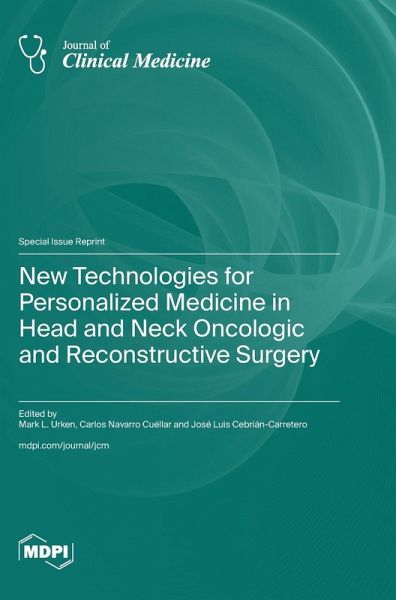
New Technologies for Personalized Medicine in Head and Neck Oncologic and Reconstructive Surgery
Versandkostenfrei!
Versandfertig in 1-2 Wochen
72,99 €
inkl. MwSt.

PAYBACK Punkte
36 °P sammeln!
This special issue focuses on using New Technologies in Head and Neck Oncologic and Reconstructive Surgery. Virtual surgical planning and design, CAD/CAM modeling, and surgical navigation techniques have contributed to simplifying and improving the accuracy of this specific type of surgery. These technologies have gained significant acceptance in oncologic applications. Reconstructive surgery provides many benefits since the surgical precision required to restore facial symmetry, appearance, and function is a complex challenge, and the three-dimensional (3D) position is difficult to control, e...
This special issue focuses on using New Technologies in Head and Neck Oncologic and Reconstructive Surgery. Virtual surgical planning and design, CAD/CAM modeling, and surgical navigation techniques have contributed to simplifying and improving the accuracy of this specific type of surgery. These technologies have gained significant acceptance in oncologic applications. Reconstructive surgery provides many benefits since the surgical precision required to restore facial symmetry, appearance, and function is a complex challenge, and the three-dimensional (3D) position is difficult to control, especially in extensive bony defects. Virtual surgical planning and computer-aided design (CAD) allow preplanning of the oncologic resection, flap dimensions, and osteotomies in the bone flap. Computer-aided manufacturing (CAM) cutting guides allow surgeons to accurately perform planned resections and osteotomies, which has improved the precision, accuracy, and reliability of the results of bone resections and reconstructions. Surgical navigation has improved reliability and outcomes by providing real-time feedback to the surgeon. Finally, it is important to highlight how implementing all these new technologies improves patients' quality of life.














